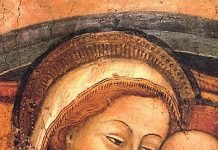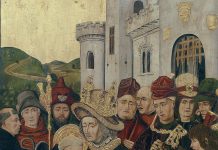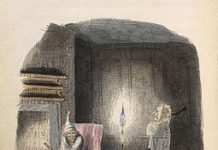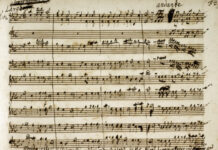
Giovanni Gaulberto (985 – 1073) – or John Gualbert – was born into a noble Italian family, and like many such, had a dissolute youth, in vanities and ‘romantic intrigues’. Hmm. But he was a prodigal son, and what prompted his conversion was one death and one potential death. Not his own, but his brother’s, Ugo, who was murdered. Giovanni tracked down the perpetrator in a dark alley, like something out of a film, and on a Good Friday of all days; but the murderer pleaded for mercy, kneeling with his arms outstretched. Giovanni had a sudden realization of the Cross, on which Christ forgave his own murderers, and from that moment on, the acratic youth became the ascetic man.
John became a Benedictine monk, and spent the rest of his life in prayer, work and penance, going beyond the rules. He moved on from there, realizing he was called to found a new and stricter reform, devoted to contemplation and asceticism; and so settled in Vallambrosa, after which region his Order was named. His way of life was so severe, it had to be lessened to keep even zealous postulants. Brother John was renowned for his holiness, and his supernaturally inspired counsel – even Popes would seek his advice and prayers, including the great reformer Gregory VII, and Leo IX made the pilgrimage to see him in person.
Our saint died on this 12th day of July in 1073, at the age of 88, and was canonized by Celestine III in 1193. Galileo was for a time a novice with the Vallambrosians – the vagaries of history! They are still going today, with, as of 2015, with 9 houses, 73 monks and 43 priests, the motherhouse still in Vallambrosa.
Saint John Gualbert is patron saint of foresters and rangers since he had his monks plant trees as part of their Benedictine ‘ora et labora’.











